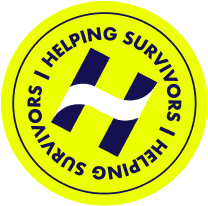Sexual Abuse in the Catholic Church
The impact of sexual abuse in the Catholic Church is extensive. Many victims may suffer from issues for the remainder of their lives after experiencing abuse from a person in a position of power and trust. At Helping Survivors, we understand how these situations can harm an individual and their family. We are here to help by providing resources and advocacy to victims of Catholic church priest sexual abuse.

Key Takeaways
- The issue of sexual abuse by priests in the Catholic Church is a much larger issue than previously believed and one that has had a profound and lasting impact on many victims
- Awareness of the proliferation of church sexual abuse has been growing since at least 2002 because survivors started to come forward to tell their stories and seek justice and an end to the harm
- If you have experienced sexual abuse or assault by a leader of the Catholic Church, you have rights and options to report the harm and prevent future abuse
Widespread public knowledge of sexual abuse in the Catholic Church dates back to at least 2002 when the Boston Globe first published its investigation into the scandal. Despite decades of stories coming to light, sexual assault by priests and others within the church remains an ongoing and pervasive problem.
Data collected from 2019-2020 showed that 3,924 survivors made 4,228 allegations of sexual abuse. According to a U.S. Department of Justice study, 4,392 priests—4 percent of all active catholic clergy nationwide—faced allegations of child sexual abuse. The study further found that 10,667 victims came forward with allegations, and the average abuser was a priest employed by the church for approximately 11 years before the first reported case of abuse.
It is now clear that abuse was widespread, and the Church has silenced the allegations for decades. Yet there is still hope for victims who seek justice for the harm. At Helping Survivors, we advocate for and assist victims of sexual abuse, including victims of Catholic priest and clergy sexual abuse. We can provide compassion, resources, guidance, and legal connections to help you seek justice and compensation.

- The Signs of Sexual Abuse by Catholic Church Priests and Clergy
- Factors That Led to the Proliferation of Sexual Abuse in the Catholic Church
- Reports of Catholic Church Sexual Abuse in the Media
- International Reports of Catholic Church Sexual Abuse
- Help for Survivors of Catholic Church Sexual Abuse
- Want To Speak With A Lawyer?
Kathryn Kosmides
Managing Director | Helping Survivors
The Signs of Sexual Abuse by Catholic Church Priests and Clergy
Like all violent crimes, victims of clergy abuse can come from all demographic backgrounds. However, a majority of abuse within the Catholic Church happens to children and adolescents, starting at or around the time they are spending time alone with religious leaders. Recognizing potential victims and the signs of sexual abuse in the Catholic Church can be crucial to intervening and providing survivors with resources.
Emotional and Behavioral Indicators
Victims may exhibit emotional or behavioral changes, such as withdrawal, depression, or anxiety, particularly around church activities and clergy members. Such symptoms are red flags in a setting where clergy are highly esteemed.
Physical Signs of Clergy Sexual Abuse
Clergy abuse victims may have physical signs of the abuse, such as bruising, biting, sexually transmitted diseases, cuts, stomach aches, or other bodily injuries. Adults should always take unexplained injuries, complaints about physical discomfort, and evidence of sexual assault seriously. If someone is showing these signs, you may want to sit down with the person and have an age-appropriate conversation. Depending on the situation, you may also want to bring in a third party, such as a school counselor, a medical professional, or law enforcement. You can speak with an advocate who can help guide you on the best options by calling a hotline such as RAINN or VictimConnect.
Situational Clues in Catholic Settings
Events such as confessions, church camps, and private pastoral counseling offer opportunities for abusers to exploit their power. Be cautious if a priest or other Catholic Church figure insists on private time with a minor, especially in isolated areas of a church, rectory, or other religious venue. If the minor is showing emotional and behavioral indicators of sexual abuse, intervention and assistance should be sought.
Factors That Led to the Proliferation of Sexual Abuse in the Catholic Church
Several factors including hierarchical power dynamics and flawed recruiting processes have created an environment conducive to abuse within the Catholic church while simultaneously discouraging victims from reporting it.
Power Dynamics
A primary factor enabling Catholic church priest sexual abuse is the disparate power dynamics between clergy and congregants, particularly for minors.
The Church’s hierarchical structure puts priests in a position of reverence and authority. For the most part, this power goes largely unquestioned. As a result, it becomes easy for abusive priests to harm and manipulate victims and keep them from telling someone or reporting the abuse.
Additionally, a priest’s authority often extends to the victim’s family and the church community. This can increase cases of intimidation and fear in adolescent victims, which makes coercion even easier.
Culture of Secrecy
An extremely toxic factor enabling sexual abuse in the Catholic Church is the ingrained culture of secrecy. In the church, it is normal to handle most sexual abuse allegations internally, so the police and other legal authorities often remain unaware of incidents. This process protects the reputation of the Church while hurting innocent victims.
The Church fosters an insular environment that prevents victims from coming forward with their claims and allows abuse to continue without consequences. Church members often do not express empathy toward victims and often blame victims for the abuse. This victim-shaming creates a more toxic environment, further silencing those abused.
The reluctance of the Catholic Church to deal with allegations of sexual abuse openly results in ongoing trauma for the survivors. Church officials so rarely face punishment, creating little incentive for survivors to come forward as they have fears or resignations of law enforcement.
Even worse, Catholic Church officials have actively covered up abuse and shielded priests accused of abuse. Instead of reporting abuse, they simply transferred accused priests to other parishes and assignments, allowing them to prey on new victims.
Lack of Screening and Training
Another factor in Catholic clergy sexual abuse is improper screening and training for aspiring priests. In other professions involving close contact with vulnerable populations, job candidates must undergo the psychological evaluations and background checks that go along with professional licensing processes. Unfortunately, this is not the case for those entering the priesthood.
The lack of screening clergy members allows those with predatory tendencies to enter a position of trust and power. It doesn’t help that the training offered to seminarians typically doesn’t include education on proper boundaries or the psychological impact of sexual abuse.
Creating a more extensive vetting process and mandatory training is essential to prevent cases of sexual abuse. ProPublica’s Credibly Accused searchable database of abusers from most dioceses in the U.S. was designed to help the public have accesses to this information.
Reports of Catholic Church Sexual Abuse in the Media
Over the last 25 years, many individuals have come forward after experiencing clergy sexual abuse. New laws and lawyers willing to take on this powerful institution have been able to help survivors seek justice around the United States. Here are a few of the Catholic Church sexual abuse cases that made headlines across various states:
Maryland
An Attorney General’s Office report showed that over 150 Catholic priests and others associated with the Archdiocese of Baltimore were guilty of abusing over 600 children. The ages of the children ranged from preschool to young adults. Victims experienced sexual abuse and physical torture dating back to the 1940s.
At St. Mark’s in Catonsville, 11 abusers worked there from 1964 to 2004. Nothing was done about their abuse, even after it was reported to the church leadership. Leaders instead hid the abuse, and victims received no protection.
The lack of accountability within the church caused the government to act. The Maryland state legislature passed a bill ending the statute of limitations for abuse-related lawsuits, allowing all victims to seek justice, regardless of when it occurred.
The report is replete with examples of systemic abuse, such as in the cases of Thomas Kuhl and Leo O’Hara, who had several victims each.
Illinois
The Attorney General’s report on Catholic Clergy Child Sex Abuse in Illinois—a 700-page document—revealed 450 Catholic clergy members abused more than 2,000 children since 1950. All six Catholic dioceses in the state were implicated in this abuse.
The report probes into several notable cases. One example is Father Daniel McCormack, who had over 100 abuse claims filed against him. He was finally arrested in 2006 for abusing five boys in Chicago. Additionally, Bob Corcoran accused Father Thomas Considine of abuse in the 1970s. His claims were denied by the Rockford diocese in 2011, with church leadership stating there was no substantial proof of the incidents.
Unfortunately, the statute of limitations for many victims has expired, allowing abusers and their enablers to escape accountability. Another factor complicating the pursuit of justice is the hesitancy of church leaders to acknowledge the abuse and its victims. This leaves accused individuals in power and allows abuse to continue.
Kentucky
The Diocese of Covington’s 2020 list of sexual abusers included 90 names dating back to the 1950s. There were 59 priests on the list. However, only 14 of these individuals are still alive. The other 31 perpetrators listed were brothers, nuns, teachers, deacons, chaplains, and around 20 laypeople. According to the report, all of the accusations were substantiated.
The Diocese of Covington paid an $81 million settlement to clergy abuse victims in 2006.
Pennsylvania
In Pennsylvania, over 300 clergy members sexually abused over 1,000 children since the 1940s. However, as in other states, senior church officials hid and covered up the abuse. Some believe the number of abuse victims may be in the thousands. This total is likely much higher than the reported cases due to lost church records and victims’ fear and shame in reporting the abuse. This systemic issue of silencing and covering up abuse has plagued Catholic Churches nationwide.
California
In Northern California, over 1,500 lawsuits were filed against Catholic dioceses during a state-imposed three-year lookback window that ended in December 2022. When enacted in 2019, the lookback period gave sexual abuse victims the chance to file new lawsuits, regardless of when the incident occurred.
While some local dioceses had previously released internal lists of potential sexual abuse suspects, the accusations that emerged during the lookback window identified individuals who had never been named. This emergence of newly accused clergy threatened the dioceses’ credibility in conducting their own investigations. According to some, the legal filings may lead them to bankruptcy.
The new list includes several high-profile names, including Bishop Floyd Begin, the first bishop of the Diocese of Oakland.
International Reports of Catholic Church Sexual Abuse
Unfortunately, the problem of sexual abuse in the Catholic Church isn’t limited to the United States. It is an issue seen in Catholic Churches across the globe.
One example is in Australia, where there were over 4,400 accusations of sexual abuse within the Catholic Church over a span of 35 years. The abuse was present in more than 1,000 Catholic institutions in the country. Most victims were aged 10 to 14; however, many were younger and abused multiple times.
Just as in the U.S., cases of Catholic Church sexual abuse in Chile have also been largely “swept under the rug”.. However. since 2018, more attention has come to this serious transgression. Over 100 investigations have been conducted, and several bishops have been forced to resign, while priests and other members of the clergy had lawsuits filed against them.
Additionally, between 1945 and 2020, over 610 children were documented as being sexually abused in the diocese of Münster in Germany. According to one report, there were over 6,000 instances of abuse by church clergy; however, the number is believed to be much higher due to victims’ hesitance in coming forward.
Ireland also has tens of thousands of Catholic church victims who have reported abuse. Again, the church did not address the abuse or report it to the authorities. Instead, those accused were transferred to new parishes in the country or abroad. There has been no accountability or punishment for these grave acts, leaving the door open for them to continue.
The more victims who speak up Even in areas where seeking legal recourse is impossible, the more attention brought to the situation, the more likely it is for those in power to act.
Help for Survivors of Catholic Church Sexual Abuse
The Catholic Project and the Survivors Network of Those Abused by Priests offer resources for victims, family members of victims, and those concerned about the issue of ongoing abuse.
RAINN is the nation’s most extensive sexual abuse support network, where survivors and their families can learn more about different types of abuse and find local help, such as support groups. It also covers the laws regarding sexual abuse in each state, including the statute of limitations to file a claim and any exceptions to that statute. You can go online or call (800) 656-HOPE.
If you’ve suffered Catholic Church priest abuse, you have other options besides filing a lawsuit. You can also file a complaint with the U.S. Department of Justice and contact the DOJ with specific questions about your case.
Want To Speak With A Lawyer?






